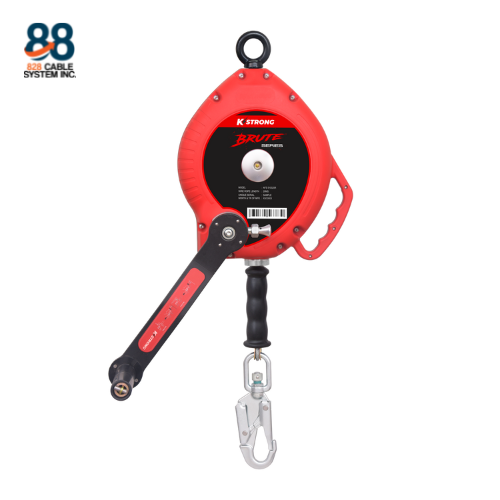In the realm of workplace safety, self-retracting lanyards (SRLs) play a pivotal role in preventing falls and ensuring the safety of employees. These innovative devices are essential for maintaining a secure work environment, especially in industries where vertical movement is required. This blog aims to provide a thorough understanding of self-retracting lanyards, their benefits, and how they compare to traditional fall protection systems.
What is a Self-Retracting Lanyard?
Self-retracting lanyard, also known as a self-retracting lifeline (SRL), is a sophisticated fall protection device designed to maintain constant tautness while allowing users to move freely. Similar in function to a car’s seatbelt, an SRL extends and retracts automatically as the user moves. It comprises a robust cord or webbing housed within a reel, which retracts into the device when not in use.
How Do Self-Retracting Lanyards Work?
Understanding how self-retracting lanyards work involves exploring their core mechanism. An SRL functions by extending and retracting as the user moves, keeping the lifeline taut. The device features an internal braking system that activates during a fall or sudden tug. This braking system is crucial for mitigating the impact of a fall, as it spreads the energy over a shorter distance, thus reducing the risk of injury.
Benefits of Using Self-Retracting Lanyards
The benefits of self-retracting lanyards are manifold. Firstly, SRLs enhance workplace safety by providing continuous protection while allowing for unrestricted movement. The built-in braking system significantly reduces the impact of a fall, which can be crucial for preventing severe injuries. Moreover, SRLs offer greater mobility and comfort compared to traditional fall protection lanyards, enabling workers to perform tasks more efficiently and safely.
Self-Retracting Lanyards vs. Traditional Fall Protection Lanyards
When comparing self-retracting lanyards vs. fall protection lanyards, several key differences emerge. Traditional fall protection lanyards often require manual adjustment and can lead to slack or entanglement. In contrast, SRLs automatically adjust to the user’s movements, maintaining a taut line and minimizing the risk of fall. The advanced braking system in SRLs also offers superior safety features compared to traditional lanyards.
Proper Usage and Maintenance of Self-Retracting Lanyards
How to use self-retracting lanyards correctly is crucial for ensuring their effectiveness. To use an SRL, attach it securely to a suitable anchor point and connect it to a body harness. Ensure the lifeline is taut but allows for necessary movement. Regular inspection and maintenance are essential to ensure the SRL’s reliability. Check for signs of wear and tear, and follow the manufacturer’s guidelines for servicing and replacement.
Choosing the Right Self-Retracting Lanyard for Your Needs
When selecting the best self-retracting lanyard, consider factors such as the work environment, the length of the lifeline, and the weight capacity. Different models are designed for specific applications, so choose an SRL that meets the demands of your job site. Look for reliable SRL brands known for their durability and performance.
Takeaway
Self-retracting lanyards are a crucial component of modern fall protection systems. Their ability to provide continuous, adjustable protection while allowing freedom of movement makes them an invaluable tool for maintaining workplace safety. Investing in high-quality SRLs and adhering to proper usage guidelines can greatly enhance safety and efficiency on the job site.




